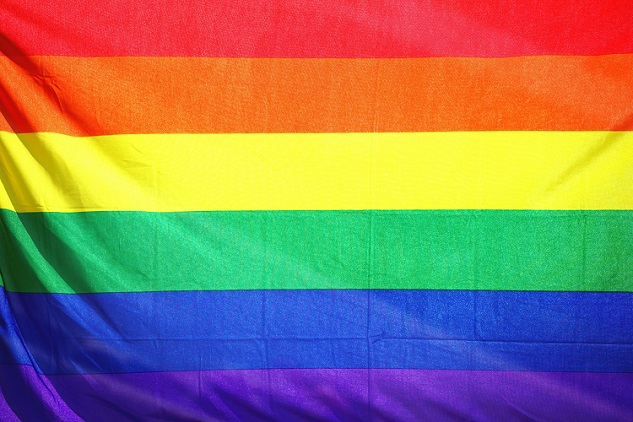LGBTQI+
Seven Decades since Independence and Still Fighting for Equality

Most Indians are assured of the fact that they cannot be discriminated against for who they are and can freely express themselves. Yet some of us fear discrimination if we try to be our true selves and not what society expects us to be.
The term ‘transgender’ refers to a broad spectrum of individuals who do not self-identify with the gender assigned to them at birth. According to the 2011 Census, 4,90,000 Indians identified as transgender, continue to struggle for equality before the law. The struggle has been long and full of hindrances as are all struggles involving minority rights.
Until 2014, transgender people in India were bereft of any legal recognition or rights. In 2014, the Supreme Court of India through the NALSA judgment paved the way for enshrining the rights of transgender individuals in the law. They could self-identify as ‘third gender’. The judgment also declared that transgender people be granted fundamental rights and certain reservations in education and employment opportunities.
Based on the 2014 judgment, Tiruchi Siva from the Dravida Munnetra Kazhagam (DMK) party moved a private member’s bill—the Rights of Transgender Persons Bill, 2014—in Rajya Sabha (Upper House). The Bill proposed providing transgender persons the right to self-identify as male or female. The Bill was passed in Rajya Sabha but languished in Lok Sabha (Lower House) for a long time before being superseded by Transgender Persons (Protection of Rights) Bill, 2016 which was moved in Lok Sabha in August 2016. The 2016 Bill was based on the framework of the 2014 Bill albeit some notable omissions. The Bill was criticised for several reasons. However, scrapping the right to self-identification and mandatory sex reassignment surgery for changing gender in official documents appalled both transgender community and activists.
On 5 August 2019, the Transgender Persons (Protection of Rights) Bill, 2019 was passed in Lok Sabha. This Bill provides the right to self-identification and includes intersex people. ‘Intersex’ refers to people born with bodily traits that do not fit conventional expectations of female or male.
The 2019 Bill provides a broad and inclusive definition of transgender persons and a clear distinction between identity-based recognition rights and the medical procedures some transgender people might want. The Bill recognizes a series of offences against transgender persons and penalties for offenders with imprisonment for no less than six months that can extend to two years with fine.
The term ‘genderqueer’ is mentioned in the Bill but it is silent about who will be considered as genderqueer. Genderqueer refers to a person who does not subscribe to conventional gender distinctions but identifies with neither, both, or a combination of male and female genders—this gender spectrum varies from pangender to agender. This may be seen in a positive light as the government acknowledges the fact that not everyone should conform to the societal gender norms. But giving everyone a single option of identifying as transgender defeats the purpose of the bill.
The 2019 Bill replaces the 2016 Bill with some progressive amendments but in many ways, the Bill has failed to address many concerns of the transgender community. The 2019 Bill requires a transgender person to apply for a certificate of identity based on self-identification. However, this application must be routed to the district magistrate for approval and issuance of the certificate. There are no guidelines on how this decision should be made. Personal bias and beliefs of the officials cannot be ruled out in such a process. The Bill provides no provision for an appeal or review if a person is denied a certificate. Some provisions of the Bill are ambiguous and their implementation depends on authorities’ understanding. The Bill mentions that a transgender child whose immediate family is unable to provide care will be placed in a rehabilitation centre but it fails to explain how gender sensitivity and capacity to provide the care that a transgender child might need will be guaranteed in these rehabs.
The NALSA judgement recognised transgender persons as ‘socially and educationally backward class of citizens’ so that they can be given reservations in educational institutions and places of employment. While the Bill has mentioned that there should be no discrimination against the community, the Bill is silent about any provisions of reservations for the community.
Social stigma has made the lives of transgender people difficult. According to a 2018 study by the Kerala Development Society, backed by the National Human Rights Commission (NHRC) of India, 99% of transgender people have faced social discrimination on more than one occasion including from family and only 2% of transgender people in India live with their parents. Further, 96% of transgender individuals are denied jobs and are forced to take low-paying and undignified jobs for livelihood.
Article 15 of the Indian Constitution prohibits discrimination on grounds of religion, race, caste, sex, or place of birth. The Supreme Court should recognize gender identity to be a part of the Article so that no community has to rely on a Bill to be recognized as equal citizens.
The Statement of Objects and Reasons for the Act states that it is
‘A Bill to provide for the protection of rights of transgender persons and their welfare and for matters connected therewith and incidental thereto.’
The question that remains is whether this Bill will succeed in shifting the status quo that prevails in our society for transgender persons. If not, then how long will it take to finally provide a section of our society the dignified life that they deserve?
